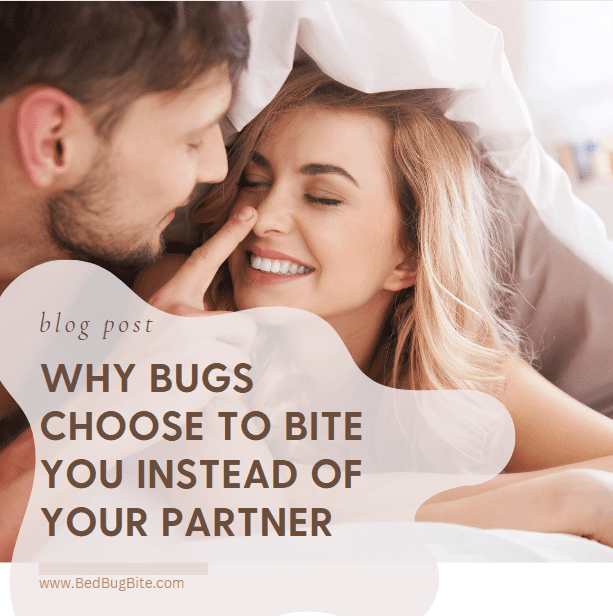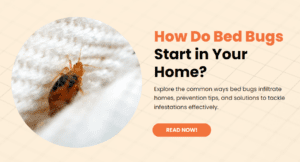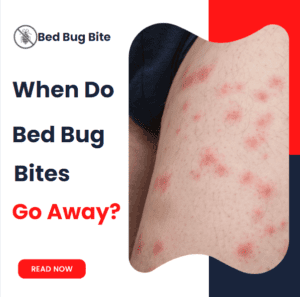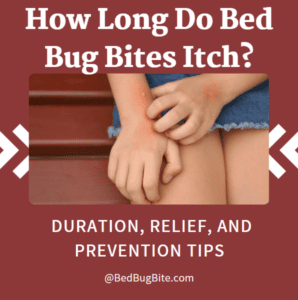Unveiling the Puzzle
Have you ever woken up to the vexing reality of itchy bed bug bites, only to find your partner blissfully untouched? This selective biting pattern has left many of us scratching our heads in bewilderment. It’s a common question we hear: Why do bugs bite some people and not others, specifically within the same household?
In this exploration, we’re diving deep into the factors that influence the seemingly discerning appetite of these nocturnal nuisances. From the intricacies of bed bug sensory perception to the individual variances in body chemistry. We’ll shed light on why you might be more appealing to these pests than your partner. Through understanding the sophisticated mechanisms behind bed bug behavior and the multifaceted factors of attraction. Our goal is to equip you with the knowledge to address and prevent these unwelcome bites. Join us as we unravel the mystery with scientific insights and expert analysis to give you the upper hand in your personal battle against bed bugs.
As a bed bug bite knowledge expert
I’ve encountered countless instances of this peculiar biting pattern. Through meticulous observation and analysis, I’ve gathered that there’s a wealth of elements at play. Let’s embark on this investigative journey. Arm ourselves with information that not only educates but also empowers us to create a bed bug-resistant environment.
The American Academy of Dermatology lends credence to our discussion, noting the varied reactions individuals have to bed bug bites. While some may exhibit clear, often itchy bite marks, others might not notice any signs at all. Contributing to the myth that bed bugs are choosy biters. By delving into this complexity, we pave the way for solutions that cater to everyone, not just the seemingly favored few.
Join us on this journey of discovery and prevention, as we sift through facts and debunk myths. Laying the groundwork for a bed bug-free home.
Understanding Bed Bug Behavior
In our quest to decode why bed bugs might bite one person over another. It’s imperative to start at the source—bed bug behavior itself. These elusive critters are driven by basic survival instincts, which dictate their actions from feeding to breeding. By honing in on their behavioral patterns, particularly their attraction and feeding tactics. We can begin to understand the ‘why’ behind their selective feasting.
The Science of Attraction
Bed bugs, contrary to popular belief, don’t seek hosts based on personhood but rather on the cues that humans unwittingly emit. Research points out that bed bugs are equipped with antennae that act like sophisticated biological sensors. Tuned to detect the carbon dioxide we exhale. The heat our bodies radiate, and the pheromones in our sweat. These signals act as a beacon, guiding bed bugs to their next meal—us. They’re not discerning gourmets; they’re opportunists after the most accessible blood supply.
Bed Bug Feeding Patterns
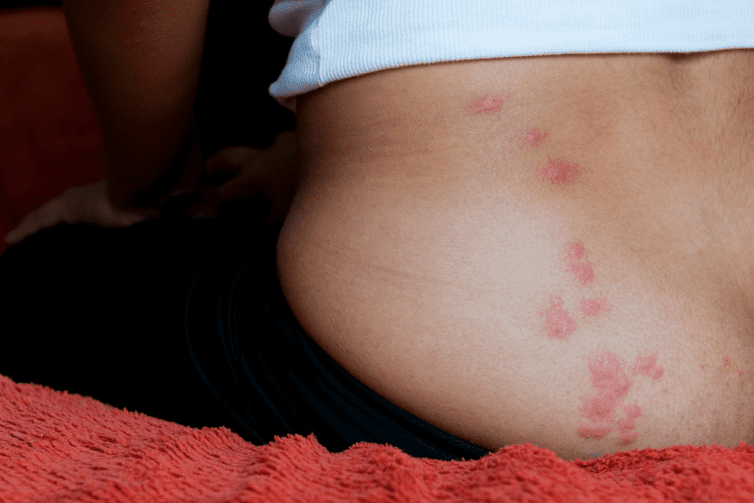
When the night falls, bed bugs emerge from their hiding spots, driven by an innate need to feed. Studies, including those cited by the esteemed Entomological Society of America. Illustrate that these insects follow a predictable pattern of coming out at night when hosts are less likely to notice their presence. This stealth is crucial to their survival. Their feeding cycle is strategic, occurring every 5-10 days, which is why you might notice bites appearing in intervals. In choosing their host, bed bugs rely on their immediate sensory feedback, not a premeditated choice, which means everyone is fair game in a bed-ridden environment.
Through understanding these facets of bed bug behavior. We can better appreciate why some might wake up with bites while others do not. It’s not a matter of preference but a complex interplay of biological and environmental factors. This knowledge is our first line of defense, empowering us to anticipate their moves and counteract effectively.
The Role of Individual Chemistry
The mystery of why bed bugs choose certain individuals as their victims can often be traced back to the unique chemical signature each of us carries. Like a fingerprint, our individual chemistry can make us more noticeable to these pests. It’s the subtle nuances in our biological makeup that can turn some of us into targets while sparing others.
Scent and Carbon Dioxide
Our bodies emit a complex bouquet of scents and chemical signals that can either be a siren song or a near-invisible cloak to bed bugs. Carbon dioxide (CO2) is a major one, a byproduct of our breathing. The more CO2 we produce, the easier it is for bed bugs to locate us. A person who exhales more CO2, often due to a larger body size or a faster metabolism. Might inadvertently roll out the red carpet for these bloodsuckers. The National Pest Management Association confirms that bed bugs can sense and are attracted to the carbon dioxide emitted by humans. Which can explain why they might favor one person over another in the same bed.
Body Heat and Skin Temperature
Moreover, the heat our bodies radiate is another powerful attractant for bed bugs. Your personal thermostat, often regulated by metabolic rate, can make you more detectable. Those with higher body temperatures might as well be shining a spotlight on themselves in the pitch-black of night. This thermoreception capability in bed bugs is finely tuned. So even slight variations in skin temperature can influence their choice of whom to bite.
Deciphering the role of individual chemistry in bed bug attraction is like putting together a complex puzzle. Each piece—our scent, the carbon dioxide we produce, and our body heat. Plays a pivotal role in either drawing in or repelling these insects. Understanding this can be the key to demystifying their biting behavior and can inform personalized strategies to safeguard ourselves against their unwelcome advances.
Genetic and Immunological Factors
Delving deeper into the conundrum of selective bed bug biting, it’s crucial to consider the genetic and immunological factors that contribute to this phenomenon. It’s not just about what attracts bed bugs, but also how our bodies react to their bites. Which can influence the perception of who gets bitten more often.
Skin Microbiome Diversity
The skin microbiome—an ecosystem of bacteria residing on our skin. Varies greatly from person to person due to genetic factors. Some bacteria can produce odors that bed bugs find repellant, while others might be more inviting. A study by the Journal of Medical Entomology suggests that the diversity and concentration of bacteria on our skin can influence the attractiveness to bed bugs. A rich and diverse microbiome might mask the appealing scents that draw bed bugs. Thereby offering a form of natural defense against these pests.
Immune Response Variances
Moreover, the way our immune system responds to bed bug bites can create a misleading narrative. An individual with a heightened immune reaction may display more pronounced bite symptoms. Leading to the assumption that they’re bitten more frequently. In contrast, someone with a less reactive immune profile may not show signs of being bitten at all. Though the frequency of bites may be the same. The visibility of bites doesn’t always equate to the number of bites one receives. As everyone’s skin reacts differently to the irritants introduced by bed bugs.
Understanding the interplay of genetic and immunological factors in bed bug bites helps us recognize the invisible forces at work that shape our experiences with these pests. It’s a reminder that the issue is not as clear-cut as it seems and that what lies beneath the surface is often a complex web of biological interactions. Recognizing these nuances is essential in developing more targeted and effective strategies for prevention and treatment in the diverse battle against bed bug infestations.
Practical Prevention and Mitigation Strategies
Given our insights into the factors that influence bed bug behavior, we can develop a robust plan to prevent and mitigate bed bug issues. This approach requires a multifaceted strategy that not only reduces the factors that attract bed bugs but also actively disrupts their lifecycle and habitat.
Enhancing Detection and Early Intervention
Early detection is key to preventing a full-blown bed bug infestation. Incorporating routine inspections of mattress seams, bed frames, and furniture crevices can lead to the early discovery of bed bugs. Tools like bed bug interceptors placed under bed legs can not only monitor for activity but also reduce the number of bites, by physically blocking the path bed bugs take to reach you. The use of canine detection teams, as highlighted by research from institutions like Purdue University, is an innovative and highly effective method to sniff out even the most concealed bed bugs.
Climate Control and Maintenance

Maintaining a cool, well-ventilated bedroom environment can deter bed bug activity, as they prefer warmer conditions for breeding and feeding. Using air conditioning in warmer months and reducing humidity levels can make your space less attractive to bed bugs. Regular maintenance of these systems ensures they function optimally, creating an inhospitable environment for bed bugs.
Integrative Pest Management Approaches
Combining physical, chemical, and biological strategies can lead to successful bed bug management. This includes regular vacuuming, using mattress encasements to trap and starve any bed bugs, and applying appropriate insecticides with a professional’s guidance. Integrative pest management approaches stress the importance of combining various methods for a comprehensive defense against bed bugs.
By implementing these practical prevention and mitigation strategies, you take control of your living space and reduce the factors that contribute to bed bug issues. It’s not just about reacting to an infestation, but proactively creating an environment where bed bugs are less likely to thrive and where early signs of their presence are swiftly addressed. Through vigilance and sustained effort, maintaining a bed bug-free home becomes a highly achievable goal.
Post-Bite Care and Relief
When bed bug bites do occur, managing the aftermath is crucial to minimize discomfort and prevent secondary infections. Effective post-bite care can alleviate symptoms and speed up the healing process, providing relief and peace of mind.
Identifying and Treating when bugs bite you
Recognizing the signs of bed bug bites is the first step toward treatment. Bites are typically red, with a darker red spot in the middle, arranged in a line or cluster, and accompanied by itching or swelling. Over-the-counter antihistamines and corticosteroid creams can be applied to reduce the itchiness and inflammation. The American Academy of Dermatology provides guidelines on how to treat bed bug bites effectively, emphasizing the importance of not scratching to avoid infection.
Home Remedies and Soothing Techniques
Home remedies can also offer relief. A cold compress or a soothing oatmeal bath can alleviate the itching sensation. Natural anti-inflammatory agents like aloe vera or tea tree oil may help reduce swelling and redness while also providing a cooling effect on the skin.
Professional Medical Attention
If bites appear excessively swollen, show signs of infection, or if an allergic reaction is suspected, seeking medical attention is imperative. Doctors can prescribe stronger antihistamines, antibiotic treatments, or even administer corticosteroid injections for severe cases. It’s important to monitor the healing process and to communicate with a healthcare provider if symptoms persist or worsen.
Proactive post-bite care is essential not only for physical healing but also for psychological comfort. Knowing how to treat and soothe bed bug bites can mitigate the negative experience of an infestation, allowing for a quicker return to normalcy and comfort within your home environment.
Conclusion: Navigating the Bed Bug Dilemma Together
In conclusion, the mystery of why bed bugs may prefer one person over another is a tapestry woven from biological, environmental, and behavioral threads. Understanding these intricacies arms us with the knowledge to create strategies that can protect our homes and families from the distress bed bugs bring.
Empowering Through Knowledge
Educating ourselves on the factors that influence bed bug behavior and attraction is empowering. With this information, we become more adept at preventing encounters and managing our reactions to bites. Our blog, “Bed Bug Bite,” continues to serve as a comprehensive resource for those looking to deepen their understanding and stay updated on the latest findings and techniques in bed bug management.
Collaborative Efforts for Bed Bug Solutions
Tackling bed bug issues is a collective effort. Sharing experiences and solutions through community forums or local health departments can lead to innovative strategies and support networks. For more specialized advice, entomologists and pest control professionals can provide personalized consultations.
Staying Vigilant and Responsive
Ultimately, staying vigilant and responsive is key to maintaining a bed bug-free environment. Regularly incorporating preventive measures, being attentive to the early signs of bed bugs, and reacting promptly to bites ensures a proactive stance against these persistent pests.
As we continue to explore and share insights on bed bug behavior, remember that “Bed Bug Bite” is your ally, offering guidance and support. By uniting our efforts and knowledge, we can keep our living spaces safe and serene, no matter where the bed bugs bite. Additional resources and support can be found through the National Pest Management Association, which provides valuable information for both professionals and consumers on managing and preventing pest issues, including those related to bed bugs. Click for more bed bug bite articles.

